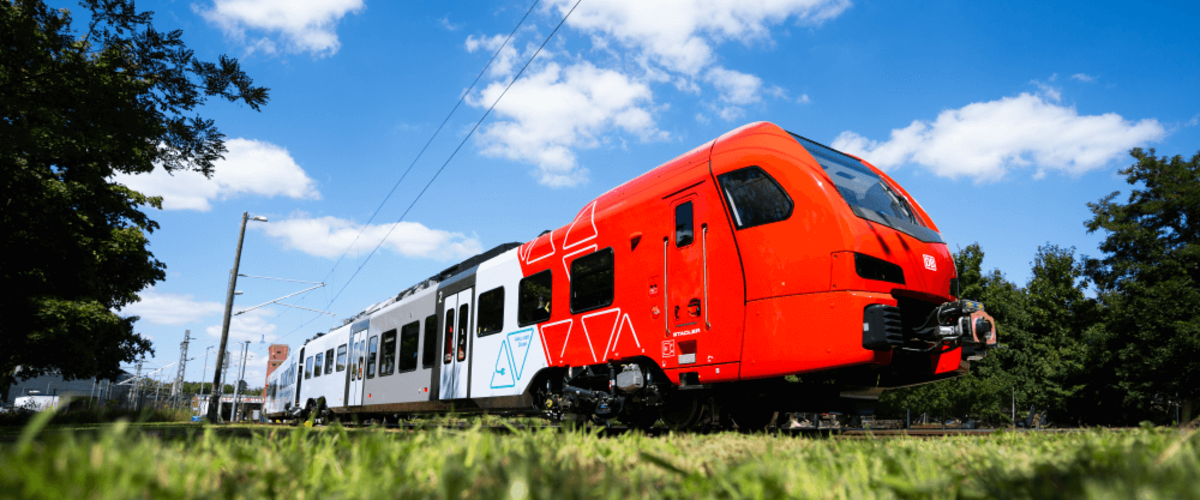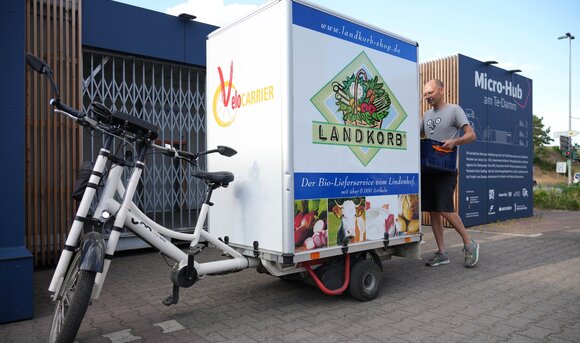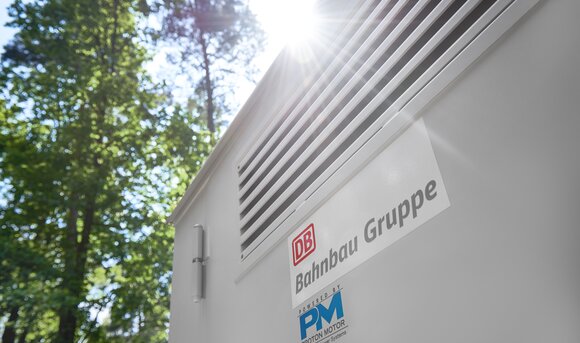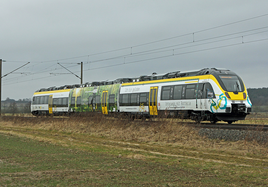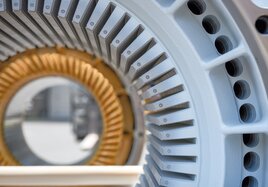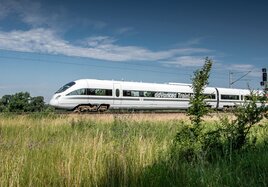Deutsche Bahn has committed to ambitious climate protection goals. As part of our decarbonization strategy, we are focusing on the further electrification of our rail network. At the same time, however, there will still be routes in the future on which we will not always be able to transport goods and passengers to their destination electrically due to geographical or operational characteristics. We are pursuing an open-technology approach here with alternative drive systems and fuels as a replacement for fossil diesel.
Virtual test run for alternative drive systems
We use an internally developed simulation tool to identify the most efficient and climate-friendly drive type when tendering and procuring vehicles. Whether battery-electric drive systems or systems with hydrogen and HVO biofuel: our DB Eco Rail Simulator simulates all alternative drive systems and hybrid systems on the respective route in a driving simulation.
>
200
vehicle parameter
form the data basis for the DB Eco Rail Simulator
To do this, we feed the tool with a large amount of data. In addition to over 200 vehicle-specific parameters that we request from the manufacturers, this also includes timetable data and route parameters, such as curve and elevation profiles, which have an impact on driving dynamics. This enables us to model so-called digital twins and, by linking the data, to create realistic simulations of rail journeys.
A digital twin is a detailed representation of a real object, environment or process on a digital level. In their model, the digital twins behave exactly like their counterparts in the real world. With the help of the DB Eco Rail Simulator, we can check whether the respective drive system is correctly designed for operation on a given route. For example, we can see whether the battery size is sufficient for the train to reach the next recharging point even at -10°C outside temperature, with a full complement of passengers and a tight driving style. This is important for planning, as the significantly shorter range and more complex charging processes compared to fossil diesel are still the biggest challenges when switching to climate-friendly alternative drive systems.
Next stop: Diesel phase-out
With the DB Eco Rail Simulator, for example, we can calculate exactly how many hydrogen filling stations we would need along a route or where electrification island systems would have to be installed in the rail network for recharging battery EMUs. The simulation tool also maps weather conditions, which can have a major impact on energy consumption or the state of charge. An interface to the database of the German Weather Service was programmed for this purpose. This allows the DB Eco Simulator to automatically incorporate local climate data into the simulation. This enables us to make our transport operations more climate-resilient and avoid follow-up costs. In addition, we use an ageing simulation to determine the service life of individual components. This helps us to estimate when a battery or fuel cell needs to be replaced. Problems during operation can thus be identified at an early stage and avoided from the outset. The DB Eco Rail Simulator thus contributes to the successful implementation of DB's diesel phase-out.
Consulting expertise for more climate protection
However, the findings from the simulations not only enable us to manage the processes for purchasing our own fleets more sustainably. We can also strengthen our consulting expertise. For example, the Eco Rail Simulator helps us in the context of tenders, such as when DB Regio applies to be the operator of a vehicle fleet for a transit authority. With our simulation tool, we can calculate customized, economically viable operating concepts for the required drive type. Sometimes the tenders are formulated in terms of technology. In this case, the tool helps us to offer the best alternative to fossil diesel. The well-founded and manufacturer-independent assessment also creates acceptance and trust on the part of the customer ordering the transport service. This is an important prerequisite for climate-friendly rail vehicles being ordered in the first place.
Simulation for lighthouse project in the Palatinate
In the Palatinate network, for example, DB Regio has been awarded the contract to operate a new fleet of battery-powered trains. To ensure that the trains meet all future operating requirements, we put the drivability of the services and the vehicle configuration through their paces in advance using the DB Eco Rail Simulator. In addition, we calculated the service life of the batteries and simulated and optimized the charging processes at night as well as various expansion states of the Palatinate network. Starting from December 2025, battery-electric hybrid vehicles will be gradually introduced into operation.
